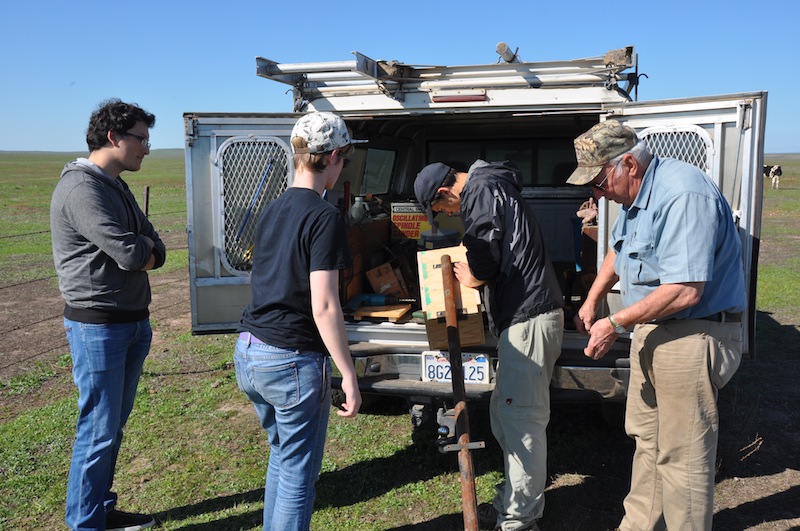Horned Larks can be seen year round in the Reserve. Look for these inconspicuous birds as they walk slowly in the short grass or as they fly in big flocks low and fast across the grassy slopes. The only true lark native to North America, these small, gray-brown, short-legged birds are found in open country all across North America. They breed from the arctic tundra of northern Alaska, south through the highlands of southern Mexico.
This summer, the Reserve purchased a four-wheel drive, gas-powered John Deere Gator. This four-seater ATV is perfect for the dirt roads and rolling hills of the Reserve. It has high clearance and lacks windows and a roof, so we get a commanding 360 degree view of the landscape, the sky, and the birds soaring by. It has a bed for hauling supplies and extra storage under the rear seat. We’ve made 10 trips so far with Colusa (named for a very rare vernal pool grass, Neostapfia colusana, found in the reserve) and she’s proving to be a very useful vehicle.
We went on two hiking trips on the Reserve. I really enjoyed both the day and the night hikes. We were able to experience something that we see everyday but now we actually got to SEE it and appreciate its beauty. Before I thought, so what? These are just fields of grass. The hikes opened up my eyes and I got to see all the little creatures that live there, their tunnels and caves.
The miles of barbed wire fences that criss-cross the Reserve’s 6,500 acres of open grasslands and vernal pools are ideal perches for falcons in search of prey. Our resident falcon, the American Kestrel, is often seen perched on fence posts, pumping its tail or hovering in the open, searching for insects and mice.
Spring brought life and color onto the Reserve. Dry vernal pools were filled with pockets of beautiful wildflowers. Burrowing bees escaped the depths of their burrows to pollinate the blooms of Goldfields, Downingia, and Meadowfoam. The warm breezes and blooming flora set the breeding season into full throttle. After a short winter, Cliff Swallows returned from the tropics to their optimal breeding site in the Reserve.
 American Kestrels populations are declining in many areas across North America. Habitat loss, lack of prey, and lack of nest sites are all reasons cited for this decline. At UC Merced we're trying to help kestrels by erecting nesting boxes along fence rows in the Reserve. Kestrels are small relatives of the lightening fast Peregrine.
American Kestrels populations are declining in many areas across North America. Habitat loss, lack of prey, and lack of nest sites are all reasons cited for this decline. At UC Merced we're trying to help kestrels by erecting nesting boxes along fence rows in the Reserve. Kestrels are small relatives of the lightening fast Peregrine.
Written by Kathleen Wong.
Rolling grasslands that harbor rare vernal pool ecosystems next door to UC Merced have joined the UC Natural Reserve System. The 6,561-acre Merced Vernal Pools Grassland Reserve will enable students and faculty to study fairy shrimp, endemic plants, and some of North America’s oldest soils just minutes from campus. Most of California’s original vernal pool habitats have been destroyed, making the new reserve a critical refuge for rare and endangered plants and animals.